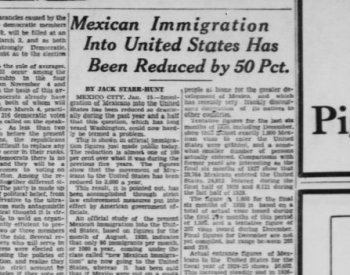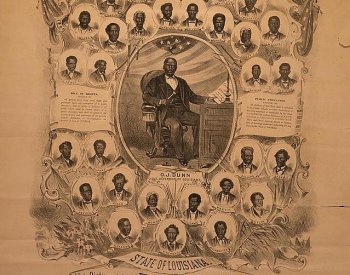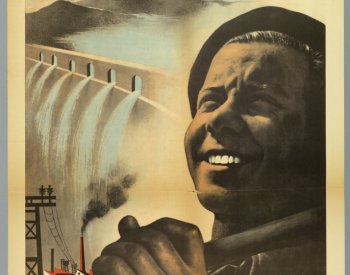To answer this question correctly, students must determine that Document A is from 1942 and that Document B is from 1955. Students must also contextualize the documents by drawing on relevant historical knowledge, such as:
- The United States and China were allied against the Empire of Japan in World War II. The United States and its Western Allies declared war against Japan after it bombed Pearl Harbor in December 1941. China had been resisting Japanese aggression since 1937 and declared war against the empire following the bombing of Pearl Harbor. Through the Lend-Lease policy, the U.S. shipped military supplies to China.
- The United States and China became adversaries early in the Cold War. In 1949, Chinese Communist forces under Mao Zedong defeated the American-backed Nationalist forces and forced them to retreat to the island of Taiwan. Although the Chinese Communist Party controlled all of mainland China, the U.S. did not recognize the Communist government and instead continued to recognize the Nationalist government exiled in Taiwan. As such, the U.S. and the People’s Republic of China had no formal diplomatic relations until 1971.
Level: Proficient
In proficient responses, the student:
- Selects the correct year for each document.
- Explains that Document A is from 1942 because the United States and China were allied against Japan in World War II.
- And explains that Document B is from 1955 because the U.S. had an adversarial relationship with the People’s Republic of China in the early Cold War.
In proficient responses, students might also incorporate specific historical information, like the fact that Japan had occupied regions of China during the Second Sino-Japanese War/World War II; Mao Zedong was the leader of the Chinese Communist Party; or the U.S. and China were on opposing sides of the Korean War and the First Taiwan Strait Crisis.
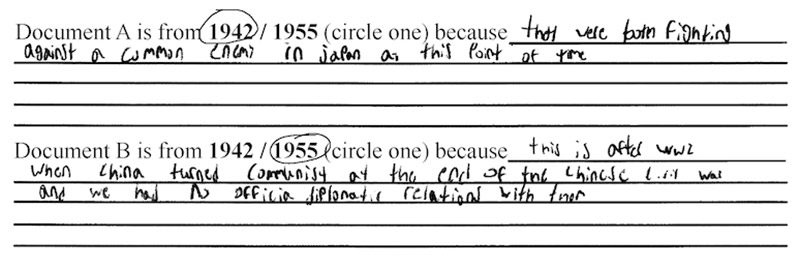
The student adequately contextualizes both documents: The United States and China were allied against Japan in World War II, and a Communist Chinese government was established at the end of the country's civil war.

The student uses background knowledge and a close reading of the documents to identify that Document A was produced during the World War II alliance of China and the United States, while Document B was produced after the establishment of the Communist-led People's Republic of China in the early Cold War.
Level: Emergent
Student selects the correct year for each document but only provides a partially correct explanation. For example, the student may correctly contextualize one document but not both or may provide partially incorrect reasoning about both.

Student correctly contextualizes Document A by identifying that the United States and China were allies during World War II but does not correctly contextualize Document B.

To contextualize Document A, the student correctly notes that the United States and China were allies during World War II but incorrectly identifies the countries' principal common enemy or theater of war. To contextualize Document B, the student correctly notes that alliances shifted in the decade following WWII but does not identify why.
Level: Beginning
Student misidentifies the year for each document or correctly identifies the years but provides mostly or entirely incorrect explanations for both documents.
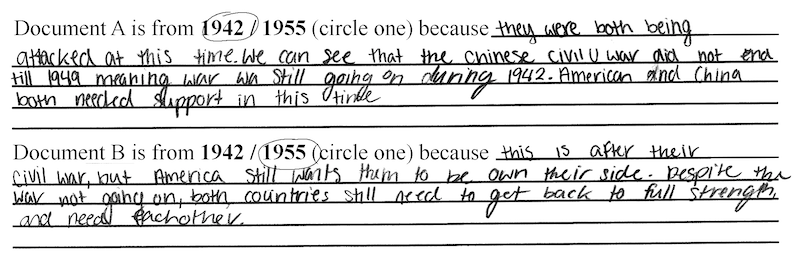
Student correctly identifies the year each document is from but fails to correctly contextualize both.

Student misidentifies the year each document is from and provides incorrect historical information.

Student misidentifies the year for each document. In reference to Document A, the student fails to identify the consequences of the Chinese Civil War on U.S.-China relations. In response to Document B, the student accurately states that Chinese Americans faced discrimination during World War II (due to being mistakenly identified as Japanese American as well as due to extant anti-Chinese attitudes and policies); however, the student mistakenly conflates these domestic experiences with American foreign policy.
